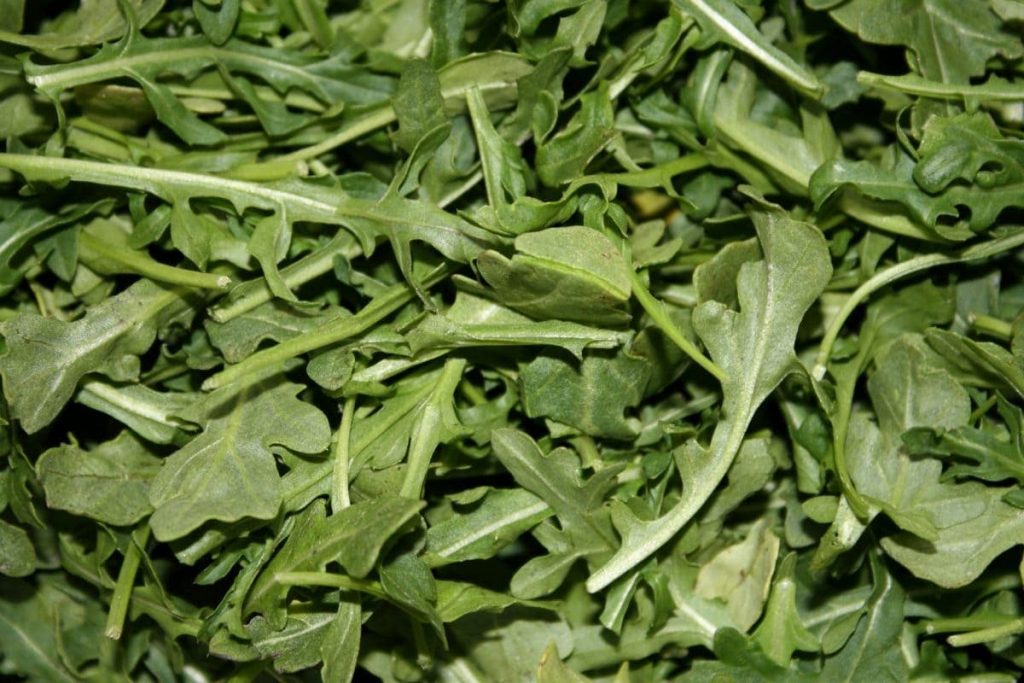The genus Eruca, which belongs to the cabbage family, includes a number of lettuce varieties, the most common of which is pepper must (which is scientifically named Eruca sativa). This plant is commonly called rucola, the name of Italian origin (also known as rucola rughetta or ruchetta in Italian) is so new that there is a lot of uncertainty in the spelling and no consensus has been reached to date. This is despite the fact that it can now be found in almost every major grocery store, vegetable and market.
Belonging to the cabbage family, it is also used to make oil, but it is most often put on the table as lettuce.
It’s characteristic, slightly pungent, the peanut-like taste can be really enjoyed fresh, so we can eat it raw. It requires minimal seasoning, just a few drops of balsamic vinegar, lemon juice, or walnut oil to make it the perfect salad. It also goes well with cottage cheese and is a good combination with cheeses.
Arugula has been a popular salad plant since ancient times and was loved for its ease of cultivation, but was also considered an aphrodisiac at one time. It is a plant rich in vitamins (vitamins K, C, A), which has edible not only leaves but also flowers and seeds. It improves digestion, increases appetite, and has a known bactericidal effect, but cannot be sustained for long. It only lasts for a day or two after you pick it up or buy it, so use it immediately.
History of Arugula
The arugula can be traced back to Asia or the Mediterranean, and has been consumed in nature since ancient times, and is still wild in many places in the Mediterranean. Its written mentions have long since survived, its consumption in ancient Hellas, along with other salads, was recommended by contemporary scholars, and in ancient Rome its seeds were highly esteemed and soaked in oil as an appetite enhancer. For a long time, however, it was forgotten and then spread with the popularity of the Mediterranean diet and became a favorite of many around the world.
Healthy arugula
Fresh arugula contains many important vitamins and minerals. It contains significant amounts of vitamin A, various B vitamins (including folic acid), vitamin C and even vitamin K. Due to its relatively high iodine content, it has a beneficial effect on thyroid problems and contains calcium, iron, magnesium, potassium, manganese, phosphorus and even a little silicon. Its characteristic pungent aroma is mainly due to its mustard seed oil.
Thanks to its excellent composition, arugula stimulates digestion, protects the lymphatic system, strengthens the immune system, and thanks to its antioxidant properties, it is also effective in preventing cancer. It balances cholesterol and blood sugar levels.
Like all green leafy plants, it has more or less nitrate content, so it’s worth paying attention to where the lettuce on the table comes from. Always wash the arugula thoroughly before use. Its beneficial effects are best achieved when consumed fresh without heat treatment.
Arugula in the kitchen
It can be added to virtually any vegetable. In addition to tomatoes, peppers and cucumbers, it can be a great salad with avocados, but also boiled or fried beets, potatoes, green beans, mushrooms and even fruits (eg apples, pears, strawberries, pomegranates), but on its own, vinaigrette also very delicious.
It can be boldly combined with more pronounced cheeses, sheep cheese, goat cheese or any blue cheese, hard cheeses (eg parmesan) also go well with it, but with a poached egg or smoked ham, bacon is also very delicious. We can add nuts, hazelnuts, almonds, peeled sunflower seeds – if we fry the seeds a little, their flavors will be even more intense. A real immune-boosting spring salad with tomatoes, month-old radishes and some spring onions.
Of course, we can also make a pizza with salami, fish, mushrooms and vegetables, with mozzarella and parmesan, and in the end we can sprinkle it with arugula in the same way. Not only is it spectacular, but it is also extremely tasty. It can also be used for risotto and soups. The point is to keep exposure to as little heat as possible and to retain its vitamin content.
Arugula is often served as a side dish to freshly baked meats, fish, grilled cheeses and vegetables. If sprinkled with a little balsamic vinegar and oil, sprinkle a few slices with parmesan or pecorino, serve e.g. next to the fried chicken, the whole catch is reborn.
Last updated: September 24, 2023



Comments are closed.